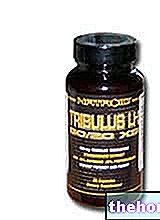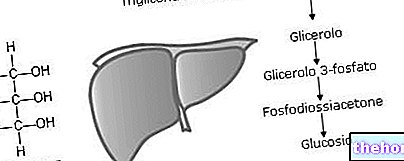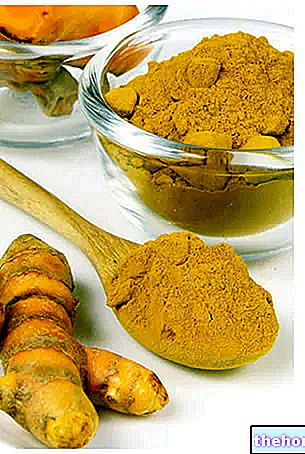What is Ribosio
D-ribose is a monosaccharide belonging to the pentose family; as such, it consists of a carbonaceous skeleton with 5 carbon atoms, closed to form a cyclic ring structure with the various hydroxyl groups facing right.

At room temperature, D-ribose appears as a white powder, generally odorless, completely soluble in an aqueous environment at 20 ° C, and characterized from an organoleptic point of view by a characteristic sweetish taste.
The classic furanose structure of the carbonaceous ring allows this sugar to bind, through a B-glycosidic bond, a nitrogenous base, thus ensuring the formation of a nucleoside, and at the same time phosphoric groups, thus allowing the synthesis of nucleotides, particularly precious from biological point of view.
Where is it found in nature?
Although D-ribose represents an element normally present in all cells, therefore also minimally in various foods, it is not possible to trace food sources capable of providing appreciable concentrations of this sugar.
Despite this, the organism is able, very easily, to satisfy the daily requirement of this element through the pentose phosphate pathway, which allows to convert the glucose, much more present and abundant in nature, into ribose, with the contemporary production of reducing equivalents useful for maintaining the antioxidant properties of the cell.

The purity of the product is evidently to be traced back to the extraction and purification techniques used, considering however that, according to some studies, the product often presents contaminations mainly represented by sugars other than ribose.
Indications
Why is ribose used? What is it for?
Ribose plays a key role in maintaining cellular and tissue homeostasis, intervening in different reactions of both an energetic and metabolic and plastic nature.
The intervention of this sugar in the:
- Energy production, through the non-oxidative phase of the pentose phosphate pathway, which allows the conversion of pentoses such as ribose into metabolites intercalated in the neoglucogenic pathway, essential for the production of glucose during periods of fasting or of increased demand;
- Synthesis of ATP, a fundamental ribonucleotide in energy processes, able to release energy through its hydrolysis;
- Protein synthesis and cell division, constituting the essential sugar for the synthesis of nucleic acids;
- Synthesis of precious amino acids both from a structural and metabolic point of view, such as histidine, glutamine, glutamate, proline and arginine;
- Regulation of the state of cellular redox, important in protecting the cell from harmful stimuli induced by reactive oxygen species.
For these reasons, ribose has found use especially in sports as an ergogenic and restorative supplement.
Properties and Effectiveness
What benefit has ribose shown during the studies?
As with most of the supplements on the market, also for ribose a lot of confusion has been created regarding the "efficacy in integrative practice, erroneously extending those that are" clinical ", ie obtained on patients with manifest pathologies, to the world of athletes. and fitness lovers.
For this reason, based on the data present in the literature, it is necessary to put some order by clarifying some key concepts on the real usefulness and effectiveness of supplementation with ribose.
Ribosio and heart
Among the advantages related to the use of ribose, it is very common to find that relating to the strengthening of the heart pump and the improvement of cardiovascular health.
Although there is scientific literature that demonstrates the efficacy of this sugar in improving cardiac reperfusion after arterial bypass, in experimentally reducing the damage associated with ischemic events of the myocardium and in supporting the energy properties of the heart in case of congestive heart failure, it is not it is absolutely possible to transfer to healthy individuals or competitive athletes the effects recorded on serious patients, for whom pharmacological or surgical therapy is also provided.
Ribose and muscle capacity
Also in this case, although there are studies able to demonstrate the efficacy of ribose in improving the energetic properties of skeletal muscle during fibromyalgia, the ergogenic effect in healthy individuals and athletes is instead insignificant.
Ribosio and sport
To understand how far the scientific literature is from the false expectations reserved for the usefulness of ribose in sports, it would be enough to read some of the numerous studies published.
In this regard, the most significant results are reported:
- “J Strength Cond Res. 2006 Aug; 20: 519-22. " : in the Wingate test conducted on 11 male subjects, oral supplementation with ribose had no effect on the performance of these athletes, either in terms of maximum strength or average strength;
- “Int J Sport Nutr Exerc Metab. 2005 Dec; 15: 653-64. ": supplementation with D-ribose had no impact on anaerobic capacity in male cyclists after intense training;
- “Int J Sport Nutr Exerc Metab. 2003 Mar; 13: 76-86. " : the oral supplementation with ribose at 10 g / day did not improve either the anerobic capacities of healthy individuals undergoing training, much less the metabolic markers of muscle fatigue;
- "J Strength Cond Res. 2003 Feb; 17: 47-52." : supplementation with D ribose did not show a significant and reproducible increase in cycling performance.
However, despite the different studies, all quite critical in relation to the ergogenic efficacy of supplementation with D-Ribose in sports, a recent work from 2009 has shown how supplementation with this sugar (7g diluted in 250 ml of water), is before that after training, it can significantly reduce the blood and urinary concentrations of malonyldialdehyde and oxidized glutathione, markers of oxidative damage.
These data would strengthen the hypothesis of an appreciable antioxidant effect conducted by Ribose, potentially useful for athletes of various disciplines, in protecting the muscular and tendon structures from the damaging events induced by reactive oxygen species.
Dosage and method of use
How to use ribose
The use of Ribosio, carried out mainly in sports, should be evaluated case by case, based on the athlete's health, dietary characteristics and needs.
Side effects
The use of Ribose, especially in certain circumstances or at inappropriate dosages, could lead to the onset of hypoglycemia, hyperuricemia, hyperuricosuria, cramping abdominal pain, nausea and diarrhea.
Contraindications
When should ribose not be used?
The use of Ribosio is contraindicated in case of hypersensitivity to the active principle.
Pharmacological interactions
What drugs or foods can modify the effect of ribose?
No noteworthy drug interactions are currently known, although it would be important to evaluate their metabolic impact during hypoglycemic therapy.
Precautions for use
What do you need to know before taking ribose?
The use of Ribose is contraindicated during pregnancy and in the subsequent period of breastfeeding.
Since it is a sugar, the use of ribose should be supervised by the doctor in case of Diabetes, Hyperglycemia, Hyperuricemia, Metabolic Syndrome and Obesity.
















.jpg)











